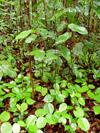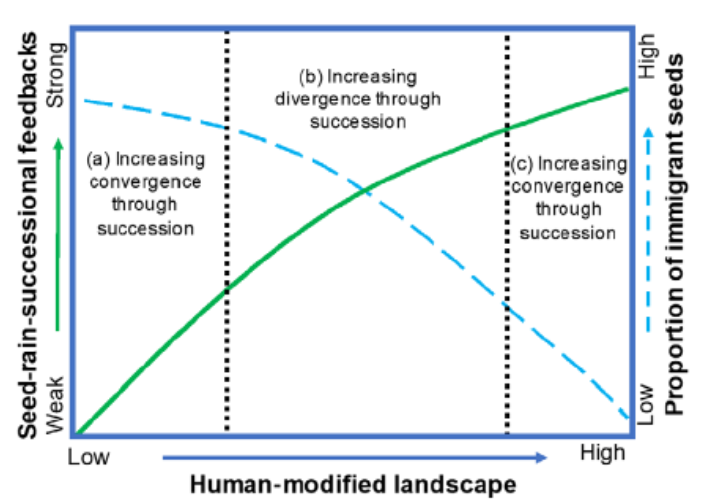Interests • Functional Basis of Demographic Trade-offs • Seed Dispersal & Seedling Regeneration • Plant-Soil Feedbacks & Soil Microbiome • Biodiveristy & Change in Nebraska's Forests
Research: Seed Dispersal & Seedling Regeneration
Modeling seed dispersal & its consequences for plant populations and communities
Many hypotheses of plant species diversity involve seed dispersal because it shapes species' distribution patterns at multiple spatial scales and thereby has implications for niche specialization. Seed dispersal, however, can oppose niche specialization, if dispersal is spatially extensive, or reinforce it, if dispersal is spatially clumped. A main focus of my research is understanding the factors that determine the distribution patterns of trees and what role contemporary ecological vs. historical evolutionary processes play in creating those distributions.
To address these questions, my collaborators and I used comparative phylogenetic analyses of ecological and evolutionary covariation in seed dispersal mode, seed size, and niche specialization of tree species in species-rich mixed Dipterocarp forest in Borneo (Figure 1). We evaluated whether evolutionary divergences in dispersal mode and seed size of tree species were associated with divergences in their ecological niches and whether interspecific variation in tree species' small-scale distribution could be explained by these three traits (Russo et al. 2007).
I also studied the role of seed dispersal in determining species local distribution in a neotropical nutmeg tree, Virola calophylla (Myristicaceae) in the Peruvian Amazon. Along with collaborators at the University of Illinois, I developed a mechanistic simulation model of seed dispersal that predicts the spatial distribution pattern of V. calophylla seeds at the forest-stand scale, based on the behavior and movement patterns of its most important dispersal agent, the spider monkey (Ateles paniscus) (Russo et al. 2006).
Our results suggest that the clumped seed dispersal patterns often generated by vertebrate dispersers, such as the spider monkey (Russo & Augspurger 2004), can influence the spatial structuring of some tropical tree populations more so than even strong density-dependent mortality. Understanding how dispersers affect the demography of tropical trees is vitally important, given global losses of vertebrate dispersers from forests due to poaching.
Studying seed dispersal and early seedling regeneration is an ongoing interest in the Russo lab. In collaboration with Robin Chazdon, Russo lab PhD student Nohemi Huanca Nunez examined how variation in seed rain influences the trajectories of regeneration in secondary forests in Costa Rica. Nohemi developed the concept of seed-rain-successional feedbacks, a deterministic process in which seed rain is shaped by successional dynamics internal to a forest site and that acts to reinforce priority effects. From a 20-year study of seed rain during succession, we found both taxonomic and functional evidence of seed-rain-successional feedbacks (Figure 5, Nunez et al. 2021).




